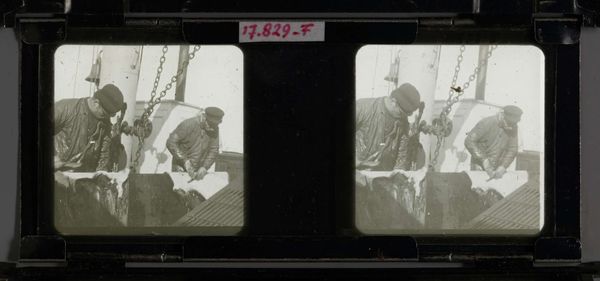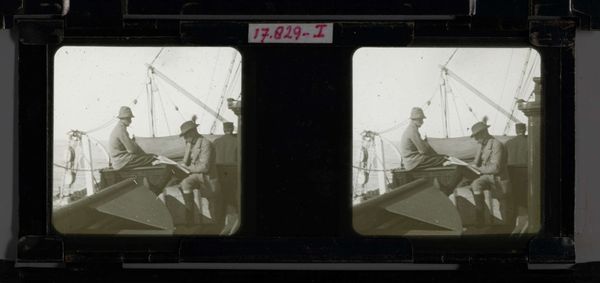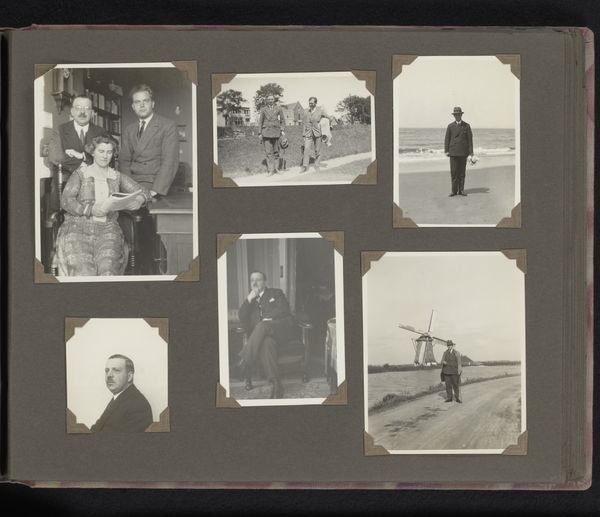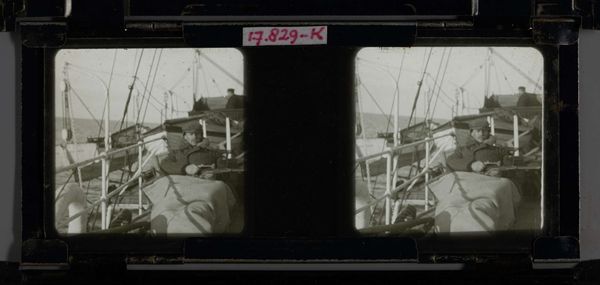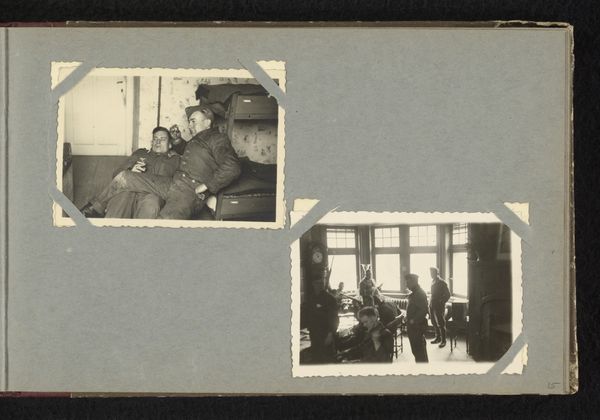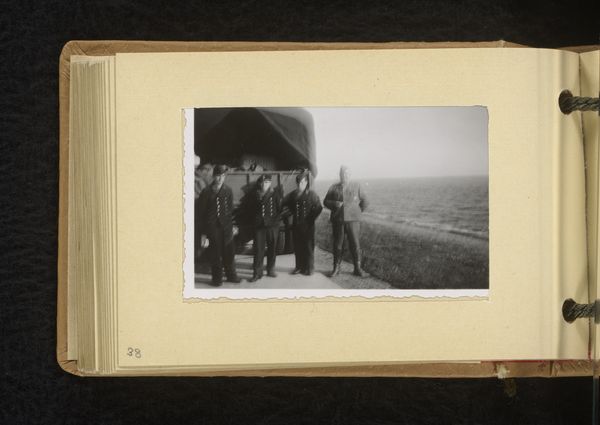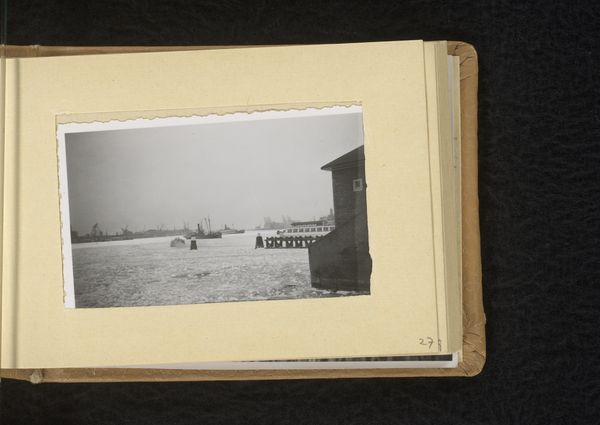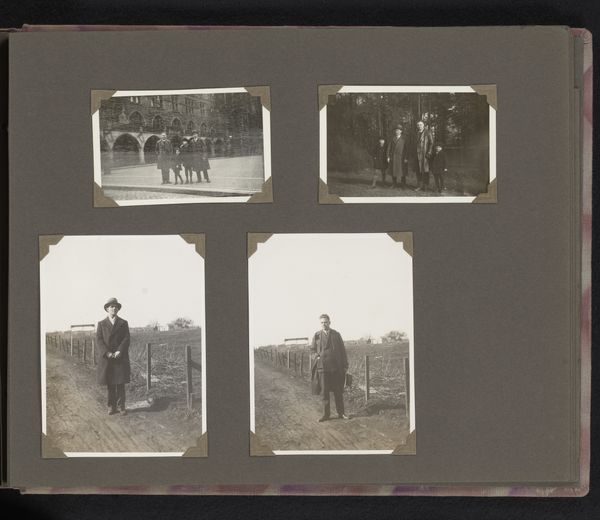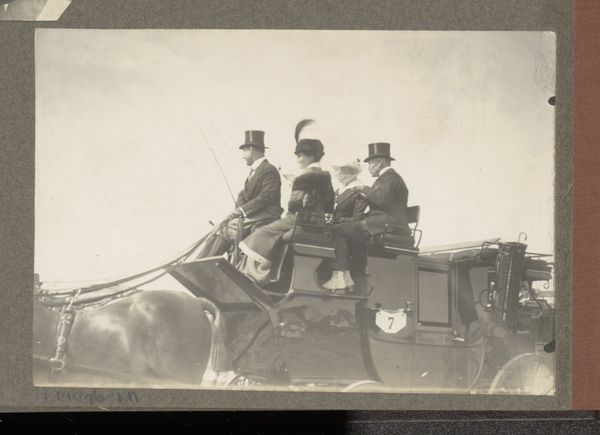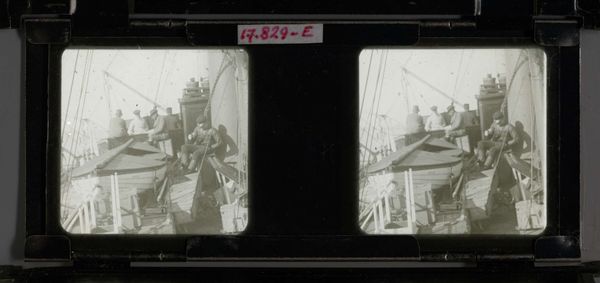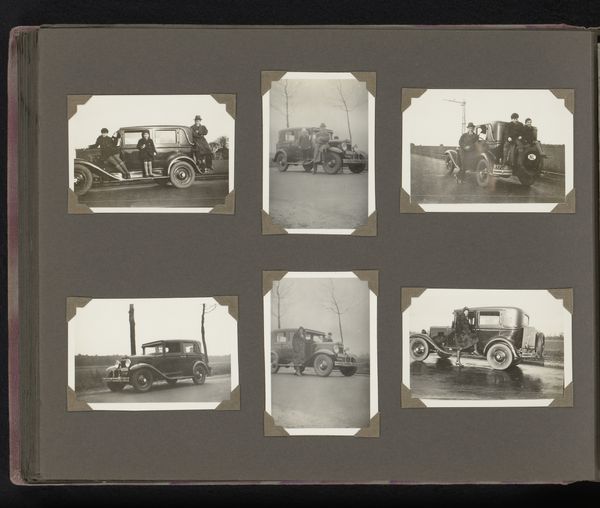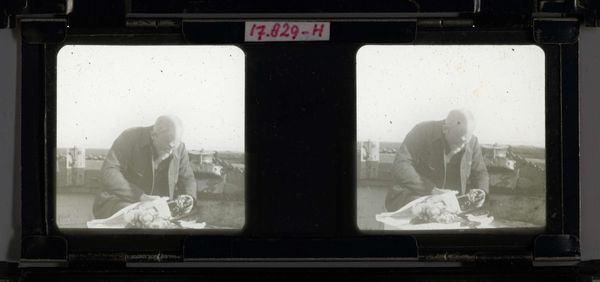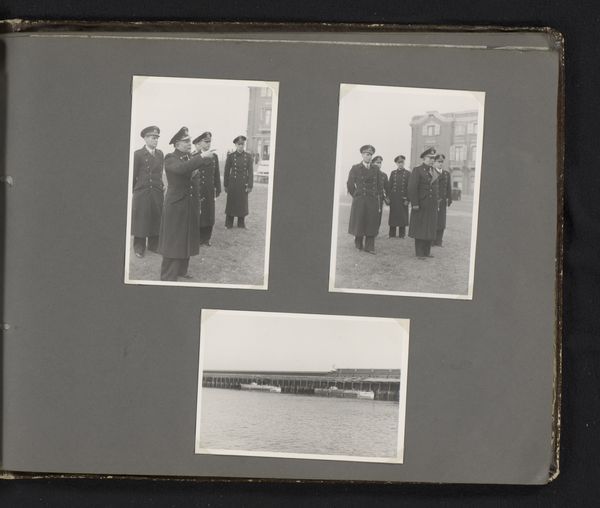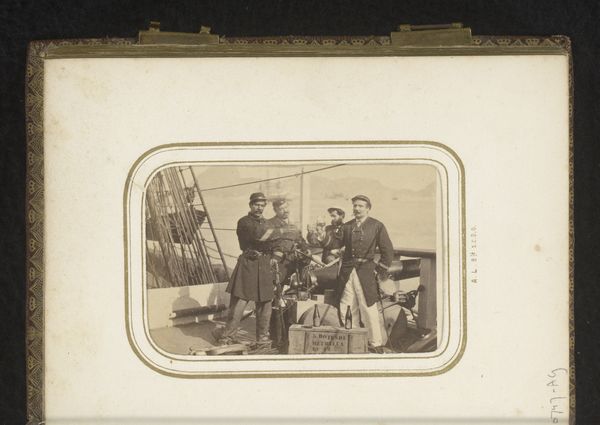
photography, gelatin-silver-print
#
portrait
#
photography
#
group-portraits
#
gelatin-silver-print
Dimensions: height 44 mm, width 107 mm
Copyright: Rijks Museum: Open Domain
Curator: This gelatin silver print, whose creation dates roughly between 1893 and 1923, captures a group of men aboard the ship Fonix. Titled "Mannen op het dek van het schip Fonix," it offers a glimpse into a specific social moment, preserved through the lens of early photography. Editor: The image has a melancholic quality; the subdued grayscale palette and the somber expressions of the subjects evoke a sense of quiet reflection or perhaps anticipation. It almost feels cinematic, like a still from a historical drama, maybe about to embark on a daring maritime voyage. Curator: Group portraits from this period are particularly valuable in understanding social dynamics and power structures. How are the individuals positioned? Who is closest to the presumed center of power, and what can this suggest about their roles and status on the vessel? Are there subtle markers of class? Editor: The lack of context certainly piques one's interest. Are they workers, travellers, family? Their clothing suggests a degree of affluence, but beyond that, we can only speculate. In today's discourse, such a homogenous group raises critical questions about who is historically visible and whose stories are erased or silenced. Curator: Exactly! Considering that this image was created during a period of significant social change, one wonders about the function this kind of formal, if slightly windswept, photograph might have had. Was it commissioned for personal commemoration, or perhaps intended for public distribution? It’s fascinating to consider how early photography contributed to constructing a sense of collective identity. Editor: The uniformity is indeed telling—clothing, the implied mission, but also that they are exclusively male. Whose gaze framed the shot, and how does that shape our perception of it now? This photograph then becomes a document loaded with historical biases. Curator: By analyzing the photograph in its historical, political and socio-economic context, we get insights on how people represented themselves, and how visual materials of that era informed society. Editor: For me, it is a stark reminder of how the medium, despite its claim to objectivity, is inextricably tied to power, perspective, and politics. I can't help but look at such an image with a modern critical eye.
Comments
No comments
Be the first to comment and join the conversation on the ultimate creative platform.
